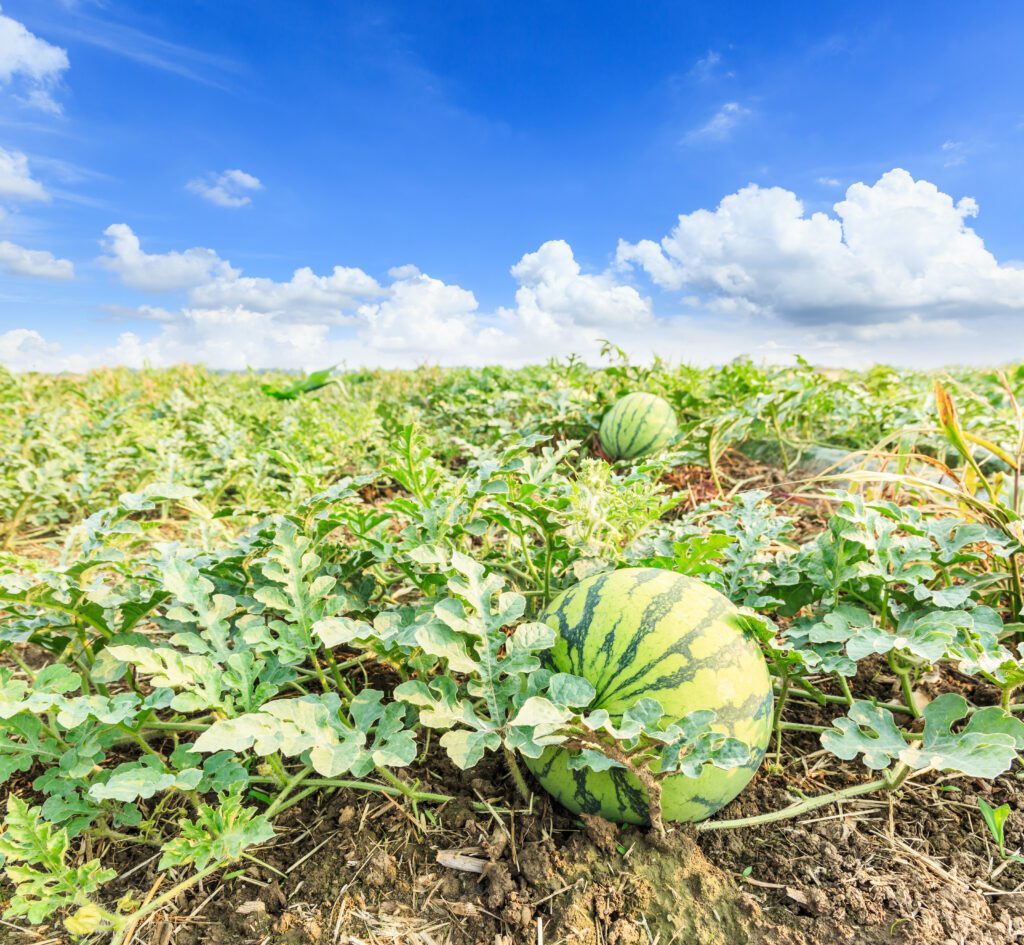by RYAN MILEJCZAK
Sponsored by Farm Credit of Central Florida
Summer is in full swing, and the Florida heat is as oppressive as ever. When temperatures shoot up like this, few things are more refreshing than a juicy, sweet watermelon. And when that watermelon is grown right here in Florida, it’s going to taste all the sweeter.
Watermelons have long been associated with the South, which is one of the main growing regions for this crop. And you may not know it, but Florida is the number one producer of watermelons in the United States — and by a significant margin! In 2022, our state harvested nearly 25,000 acres of watermelon, producing more than 9 million cwt of this crop, about 30% of the nation’s watermelon. (A cwt —or hundredweight— is a unit of measure equal to 100 pounds.) This works out to a value of more than $216 million of watermelon produced. For comparison, the second-largest producer, Georgia, harvested about 20,000 acres of watermelon, producing about 6.5 million cwt, with a value of $119.5 million.
Like all melons, watermelon (Citrullus lanatus) is a member of the Cucurbitaceae family, which also includes squash, cucumbers, and cantaloupes. Its fruits are a type of berry known as a “pepo,” which is large, contains many seeds, and has a tough outer skin. Watermelons have been cultivated since ancient times, with some of the oldest evidence of watermelon cultivation going back 5,000 years.
The watermelon first made its way to the new world in the 1500s when Spanish settlers brought it to what is now Florida. Today, there are more than 400 watermelon farms in the state, with the largest amount of production occurring in the north and north central regions of Florida, such as in Levy, Gilchrist, Marion, and Alachua county.
Chandler Mack of Mack Farms in Lake Wales explains that Florida’s mild winters and subtropical climate make the state a powerhouse for watermelon production.
“This allows Florida to harvest a majority of its crop in April and May, many weeks before other watermelon production areas can harvest,” he says.
Savannah Lloyd of Farm-Wey Produce in Lakeland agreed, adding “Florida watermelon production kicks off the entire watermelon summer season. Once we start watermelons in Florida, we can get away from imported melons and back to melons produced here in the USA, which supports local communities. Plus, we have ideal soil and conditions, which help make Florida the number one watermelon producing state in the country,” she said .
Watermelon is produced year round in Florida, but the main Florida watermelon season runs from April through July, with another smaller season running from October through December. North Florida growers typically see peak production around Memorial Day, while South Florida growers see their production peak around the Fourth of July.
Not surprisingly, watermelons mostly consist of water, which helps make them the perfect snack when the temperatures soar. This high water content means they’re not especially nutrient dense, but they do provide some nutrition and other benefits.
For example, they contain lycopene, which gives the watermelon its red color and which is also an antioxidant that can help prevent inflammation, heart disease, and cancer. They’re also a great source of vitamin C, and contain a fair amount of vitamins A and B6, potassium, fiber, and iron. They’re also a low-calorie food that’s free of fat, sodium, or cholesterol, so they’re a guilt free snack that can be enjoyed even on restricted diets.
Whether you enjoy them fresh, grilled into watermelon steaks, used in a summer cocktail, or any other way, there’s no denying watermelon is the perfect summer fruit. And when you buy Florida watermelons, you get the tastiest, freshest fruit while supporting your local farmer.

